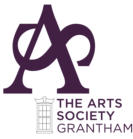LECTURE PROGRAMME
VENUE: The Theatre of the Guildhall Arts Centre, St Peter’s Hill, Grantham
09.50 – 10.25 Coffee/Tea (complimentary to members)
10.50 Please be seated for Chairman’s welcome and notices
11.00 Lecture begins promptly
12.00 noon Approximate end of lecture
GUESTS
Please notify the Membership Secretary at least 7 days before the Lecture. A Guest will
have free entry on their first visit, after which they can attend one additional lecture which
will be charged at a fee of £5.
The new membership year begins in September 2024
17th September 2024
Paula Nuttall
BEAUTIFUL, BEASTLY, BIZARRE: the Art of Hieronymus Bosch
Hieronymus Bosch’s (c.1455-1516) nightmarish monsters and demons,
his bizarre allegories, and the amorous exploits in his Garden of Earthly
Delights have intrigued viewers for centuries. Little is known about this
remarkable painter, although it has been claimed that he was a member
of a heretical sect, a dabbler in alchemy and even a drug-user!
This lecture unravels the meanings of Bosch’s enigmatic paintings in the
context of his own time, explaining them in terms of social satire,
mediæval folklore and pre-Reformation spirituality, while also revealing
the beauty and inventiveness of his images.
15th October 2024
Harry Venning
THE ART OF THE CARTOONIST
In The Art of The Cartoonist, Harry will be tracing
the history of his profession through the work of
artists who have made an impact upon language,
culture, history, and most importantly, upon him.
These include James Gillray, Charles Schulz,
Hergé ( Georges Remi), Posy Simmonds and
Ronald Searle.
Harry will also be drawing live. Prepare to hear
some tricks of his trade, learn where to put
eyebrows for maximum effect, find out what a
plewd is and when you should use it, and discover
exactly what the Eskimo brothers said in The
Funniest Joke Ever (possibly).
5th November 2024
Tyler Butterworth
HOW WE LAUGHED: The “Golden Age” of British Comedy
It is said in theatrical history that there was a Golden Age in
British comedy, from the 1970s to the 1980s. This was in the
branch of theatre known as Variety – it was a world of comedians
and impressionists, of TV shows, and end-of-the-pier shows, of
unusual acts and eccentric dances, of much loved people like
Morecambe and Wise, and Bruce Forsyth. In this unashamedly
nostalgic lecture, and sharing my personal connection with this
world, I will go back and explore the acts, the places and the
people that made us laugh. And I will also ask, “What’s happened
to comedy today?”
19th November 2024
Bertie Pearce
A DICKENS OF A CHRISTMAS AND GOD BLESS EVERYONE
Charles Dickens has often been proclaimed as “The Man Who Invented Christmas” and
indeed on hearing that Dickens had died, a cockney barrow-girl said: “Dickens dead? Then
will Father Christmas die too?” Dickens revived the
Christmas traditions with his warm portrayal of
Christmas in the domestic setting; with plum
pudding, piping hot turkey, games, dancing and
family cheer by the hearth. Although he celebrated
Christmas in numerous works it is his enduring
master piece, ‘A Christmas Carol’ published on 19th
December 1843 which immortalises the spirit of
Christmas Cheer. Dickens was a man of
extraordinary energy and talent: literary genius,
reformer, public speaker, actor and amateur
magician. In his lecture Bertie Pearce reveals a
Dickensian Christmas with readings, biographical
details and conjuring tricks.
Web site designed, created and maintained by Janet Groome
Handshake Computer Training





Web site and mobile pages designed, created and maintained by
Janet Groome Handshake Computer Training


Programme of Lectures


























